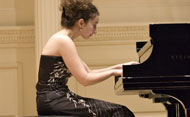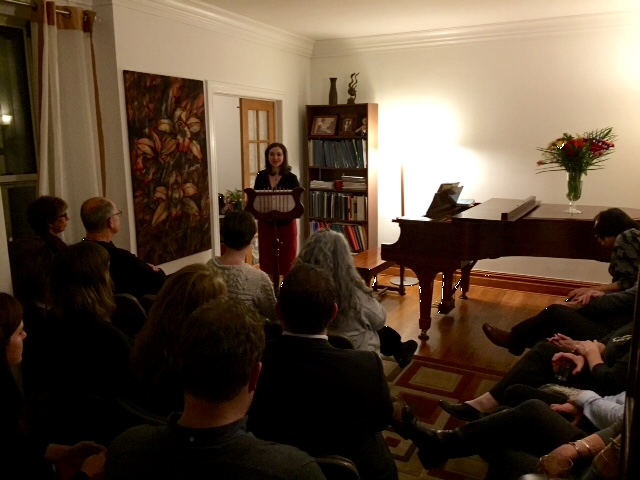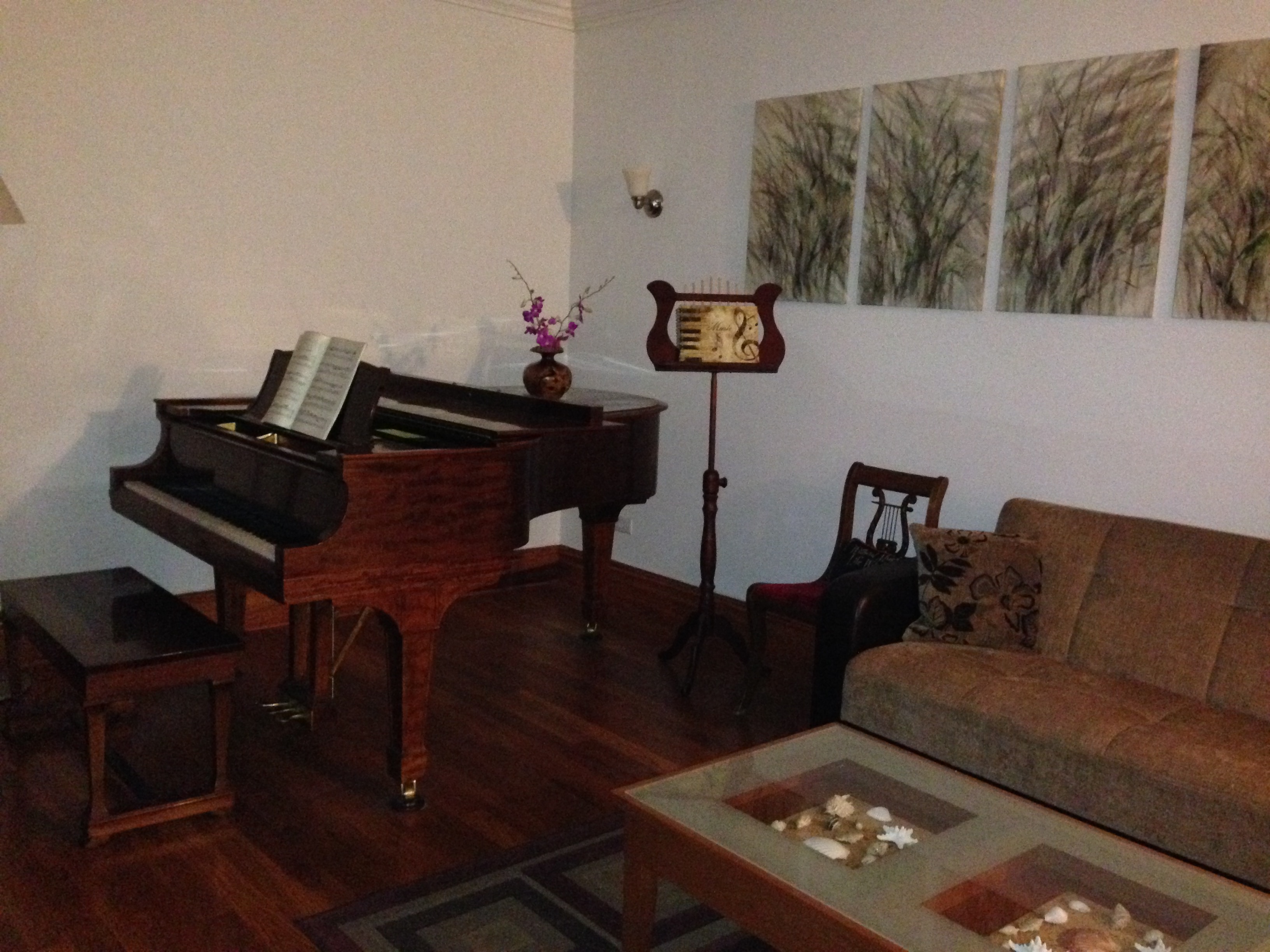Beethoven’s Complete Works for Cello and Piano – Part II
In this program, the Smigelskiy-Grinberg Duo will explore Beethoven’s Complete Works for Cello and Piano – Part II, a program which will include Mozart-inspired Variations in E-flat Major on the theme “Bei Mannern, welche Liebe fuhlen” from Mozart’s The Magic Flute, WoO 46 (1801), Beethoven’s youthful, large-scale Sonata in G Minor, op. 5, no. 2 (1796), as well as his two transcendent, late-style sonatas – Sonata in C Major, op. 102, no. 1 (1815) and Sonata in D Major, op. 102, no. 2 (1815).
Beethoven’s Variations in E-flat Major on the theme “Bei Mannern, welche Liebe fuhlen” from Mozart’s opera Magic Flute, WoO 46 (1801) followed the two earlier sets of variations – the Handelian, G-Major set of 1796 and the Mozart-inspired, F-Major set of 1798. This time around, Beethoven took up yet another folk-like, popular aria from Mozart’s Singspiel opera The Magic Flute and imaginatively recast it into seven variations, which reveal a creative marriage of Mozartean playful wit and elegance and Beethovenian humor and mischief. The theme, Allegretto, is preceded by an introductory E-flat Major chord, marked forte, held over the fermata. This grand opening gesture foretells a very similar opening of the “Eroica” Variations composed just a year later, in 1802, which are, coincidentally, also cast in E-flat Major – a tonality associated with Beethoven’s bold, heroic, and grandiose works, such as his Eroica Symphony and the Emperor Concerto. The gentle, dancelike theme in 6/8 meter that follows this opening chord, marked piano, is then followed by seven contrasting variations. The first variation immediately enlivens the theme with zesty accents, dynamic staccato texture, and imitative counterpoint exchanged between the two players. The second variation underscores the playful aspect of the theme with rapid scalar passages, marked staccato, in a humorous, opera buffa style. The Pastorale-like, third variation takes on a more introverted and lyrical character, marked piano dolce. The fourth, chromatically embellished variation makes a sudden expressive switch to E-flat Minor – a very remote, dark, and mysterious tonality, quite rare for Beethoven’s time. The mournful Minore dissipates with the return of Maggiore in the fifth variation. This exuberant and sprightly variation foreshadows Mendelssohn’s scherzando style with its playful and light staccato texture. The sixth variation, marked Adagio and dolce, is lyrical and cantabile in character, with its bel canto, florid melodic writing exchanged in a love duet between the two players, which segues, attaca subito, into the final, seventh variation, marked Allegro ma non troppo. The gentle dance-like character of the initial theme makes a cyclic return here in a playful vein, followed by a sudden unexpected detour to a fiery, Beethovenian C-Minor Coda. The stormy pathos of the Coda quickly vanishes into the distance as the lighthearted music in E-flat Major home key makes a comic and heroic comeback, with a triumphant fortissimo ending.
In 1796, while on a visit to Berlin, Beethoven composed his first two sonatas for cello and piano, which became published as Opus 5. These two youthful sonatas were, in many ways, unprecedented and innovative for their democratic treatment of both players, both in terms of virtuosity and expressivity. In fact, Opus 5 emerged as the first opus of cello-piano sonatas comparable in prestige and caliber to Mozart’s violin sonatas, where the cellist is treated as an equal partner to the pianist. In fact, a number of new technical effects emerge in the cello part in these two early sonatas, such as virtuosic arpeggios, figuration patterns, tricky bowings, double-stops, challenging shifts of register, and unusual sonorities. Architecturally, both sonatas – opus 5, no. 1 in F Major and opus 5, no. 2 in G minor – begin with a slow introduction that comes to a mysterious halt at the dominant and then segues into an energetic Allegro, which is then followed by a charming Rondo finale to close each sonata. In contrast to the more Mozartean Sonata in F Major, opus 5, no. 1, its sibling Sonata in G Minor for cello and piano, opus 5, no. 2 (1796) is more extended in form, and Beethovenian in its dramatic character. The first, lengthy G-minor movement, Allegro molto piu tosto, reveals a large-scale design and great emotional depth, and follows after the slow and long introduction, Adagio sostenuto e espressivo, with its haunting, French Overture-style dotted rhythms, arresting pauses, and constant chiaroscuro effect of light and shadow. In the Rondo – Allegro finale, the Sturm und Drang intensity of the first movement gets retransformed into a light-hearted, playful music, in the style of a contredanse, recast in G Major, with intervening lyrical and joyful episodes, shared reciprocally by both players throughout. In many ways, this charming, light, and humorous G-Major Rondo anticipates a similar type of finale as in Beethoven’s Fourth Piano Concerto (also in G Major!), composed some ten years later.
With the two late cello-piano sonatas published as opus 102, Beethoven embarks on late-style experiments with rhetoric, structure, profound emotional expression, singing quality of melody, and Bach-inspired fugal counterpoint, as he becomes more fascinated with evocations of the celestial, sacred, and archaic. His last two cello-piano sonatas of Opus 102, both composed in 1815, certainly epitomize these late-style tendencies. In his celestial Sonata in C Major for cello and piano, op. 102, no. 1 (1815), Beethoven unfolds a lyrical melodic flow and thematic unity in the opening Andante introduction, which segues into a dramatic and tense Vivace in A minor, the main first movement. In the Romantic Adagio that follows, Beethoven revisits the formal plan of a sonata “quasi una fantasia” that brings a modified recall of the opening Andante just before the finale, as he did earlier in his Piano Sonata op. 27, no. 1. This brief, sixteen-measure Adagio is not a self-contained slow movement per se but rather a laconic, bel-canto bridge to the humorous and joyful finale, Allegro vivace, with its fugato-like development section – an idea that Beethoven exploits most fully in his Allegro Fugato finale of his next and final Sonata in D Major cello and piano, op. 102, no. 2 (1815). The D-Major Sonata is more intellectually complex and emotionally paradoxical in both its scope and construction that its C-Major counterpart. It features many detours and unpredictable surprises, paving the way for the crowning Fugal finale – one of Beethoven’s late-style, sublime endings, such as can be witnessed later in his Hammerklavier Piano Sonata, op. 106 and the Grosse Fuge, op. 133. From the very first fiery movement, Allegro con brio, the listener is confronted with even more concise thematic gestures that become continually disrupted with melodic and harmonic discontinuities. The volatile and rejoicing narrative of the first movement is counterbalanced by the lengthy, hymn-like D-minor slow movement, Adagio con molto sentimento d’affetto, full of utmost grief and pathos, with a serene and understated D-Major middle section. The even more tragic-sounding, varied reprise of the Adagio music leads attacca into the Allegro Fugato finale which, despite its thorny counterpoint and many stumbling blocks along the way – as in the case of the sudden, unexpected detour to a remote F-sharp-Major region half-way through the finale – concludes this late-style sonata and Beethoven’s whole cello-piano oeuvre on a note of triumphant affirmation and transcendence.
— Program Notes by Dr. Yelena Grinberg





